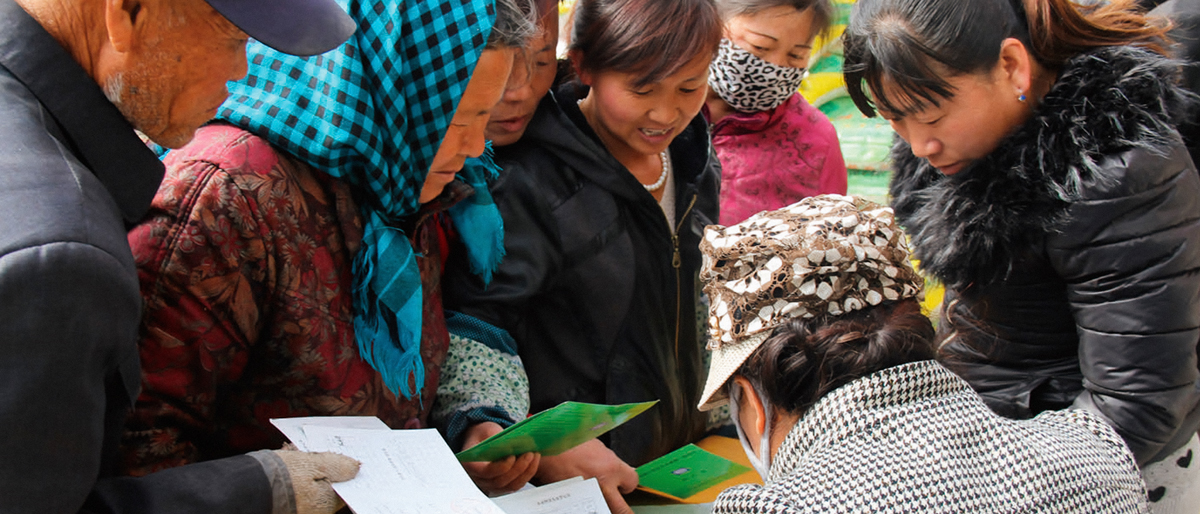Water-wise farming
Investment to boost productivity and save water in northern China

In northern China, farmers are producing more food with less water, building climate resilience and stronger livelihoods – all due to investments in infrastructure and modern technologies, alongside community involvement.
©World Bank
In the heart of Hebei Province, where water scarcity has long plagued the farming communities, investment in modern technology and community empowerment is changing lives.
For generations, farmers have relied on experience and intuition to irrigate their fields. Wang Weirong, a wheat and corn farmer in Youzhai Village, used to spend long hours determining the right time to water his crops.
"I would check the soil with my hands and decide based on the weather," Wang recalls. "It was exhausting and wasteful."
But that was before the Water Conservation Project introduced an irrigation forecast system and on-farm water monitoring in his village.
The project – which ran from 2012-2017, initiated by the Government of China and financed by the World Bank, with investment design support provided by the FAO Investment Centre – has succeeded in boosting water efficiency as well as farmers' incomes.
The FAO Investment Centre provided expert analysis to design and shape the project from the outset, monitored its progress throughout, and conducted a financial and economic review.
With data from monitoring stations that measure temperature, humidity, wind speed, rainfall, soil moisture and groundwater levels, farmers no longer need to guess when their crops need water. This information is used to generate accurate irrigation forecasts and schedules, which are shared with the farmers.
Now, Wang checks soil moisture levels and irrigation forecasts from monitoring stations. "I decide when and how much water to use based on the irrigation forecasts. It saves water and labour," he says with a smile.
Community collaboration through Water Users’ Associations
The change in Youzhai Village goes beyond individual farmers. Water Users’ Associations have been established in the water-scarce provinces of Hebei, Shanxi and Ningxia, transforming how communities manage their water resources.
There are now 290 Water Users’ Associations, involving around 760 000 members in sustainable water management practices.
Zhao Jiangang, the elected head of the association, remembers the challenges of the past.
"People found it difficult to share water efficiently and fairly," Zhao reflects. "With the association, this is now harmonious and orderly."
The association organizes the distribution of water, ensuring that every household gets its fair share. They issue water rights certificates and cards, which farmers use to access water from the field-based irrigation management system.
"It's very easy," explains Wang. "You just need to swipe the card, and water comes to your field!"
New or improved irrigation and drainage services have now reached more than half a million people, while water-saving technologies and on-farm improvements now cover 59 849 hectares.
These upgrades include canal rehabilitation, low-pressure pipe installations and micro-irrigation systems.


Investment in high tech on-farm monitoring stations and collaborative water scheduling in farming communities has transformed crop irrigation, reducing waste water while increasing yields. ©World Bank
Growing more with less
Farmers also received financial support and guidance to diversify crops, switch to less water-intensive and higher-value options like vegetables and fruit trees.
"Irrigation forecasts, scheduling and diversifying crops have made a huge difference," Wang says. "We are saving water and increasing our yields and profits."
In Ningxia, household incomes rose 74 percent due to improved irrigation systems. Almost half of the households involved in the project saw income rises in Shanxi, and almost a third in Hebei.
Annual water withdrawal in Ningxia was reduced by 22.67 million cubic metres – equivalent to 9 068 Olympic-sized swimming pools.
Meanwhile, agricultural water productivity in all three project provinces increased. For every cubic meter of water used for irrigation in those provinces, farmers were able to produce 1.40 kilograms of crops.
This adds up to a huge amount of extra food produced, without using any more water.
Wei Tieqiang, former Deputy Director of Water Resources in Hebei Province, praises the project's success. "Through the water pricing and water rights systems and Water Users’ Associations, we have been able to raise awareness among farmers for the need to conserve water," he says. "This way, we can make the modern irrigation system work and achieve higher water efficiency and productivity."

More than half a million farmers in Hebei, Shanxi and Ningxia are involved in Water Users’ Associations, helping to collectively save water and boost yields. ©World Bank
These innovative approaches are now being adopted by other central and local government programmes as part of China’s goal to create a ‘water saving society
In Youzhai Village and beyond, the Water Conservation Project has improved the sustainable use of finite water resources, supporting climate resilience and inclusive economic development.
With the benefit of investment in modern technology and in strengthening water-wise farming practices, Wang and other farmers are growing more with less, ensuring a more sustainable future for themselves and their communities.
